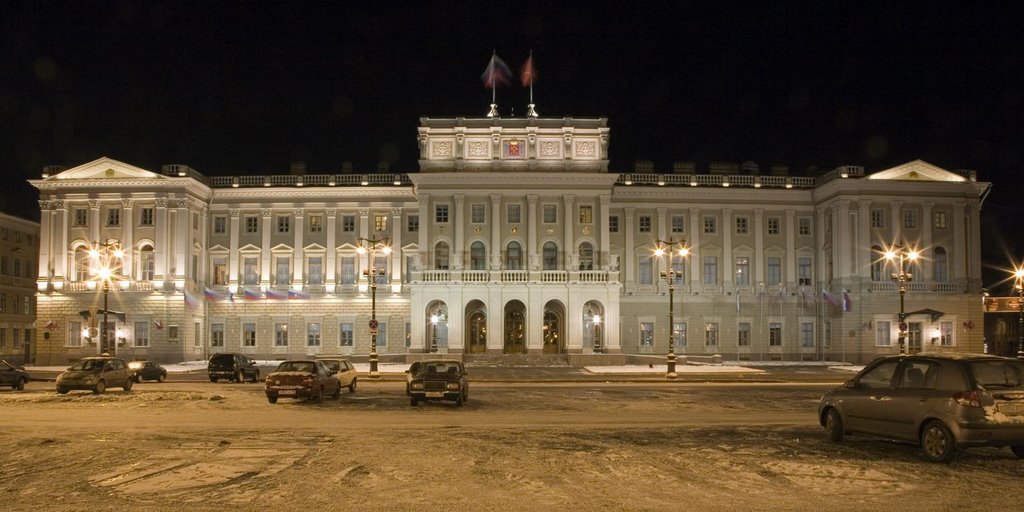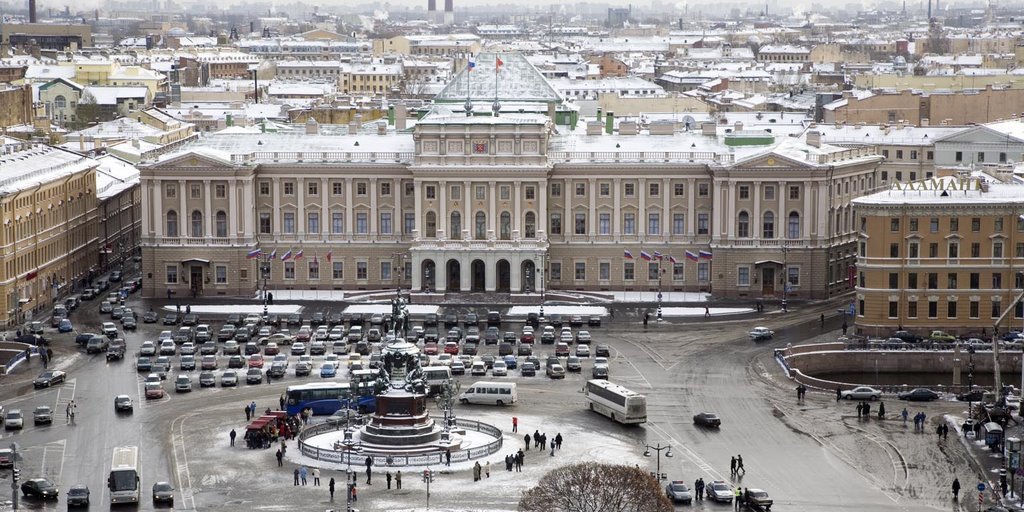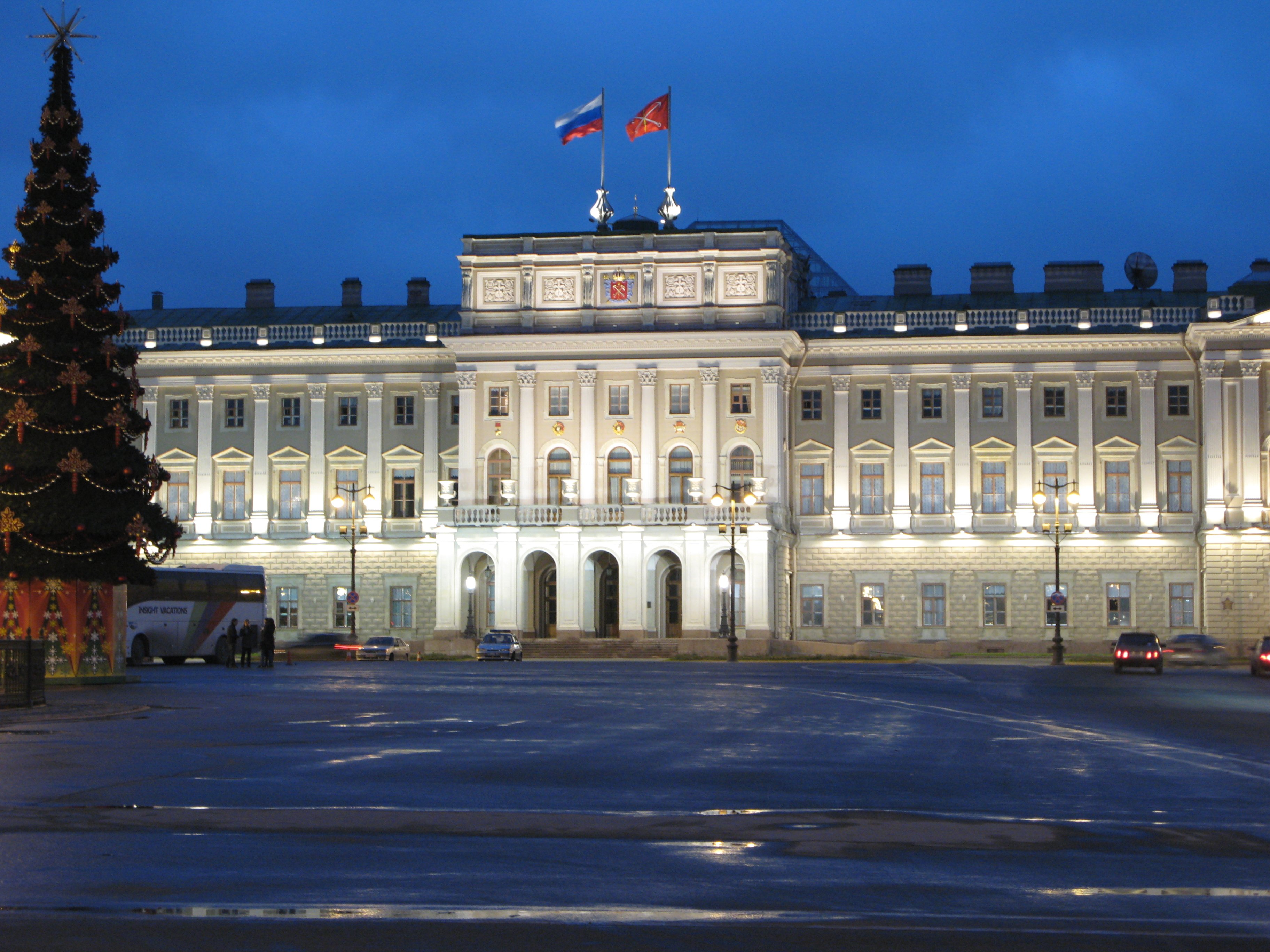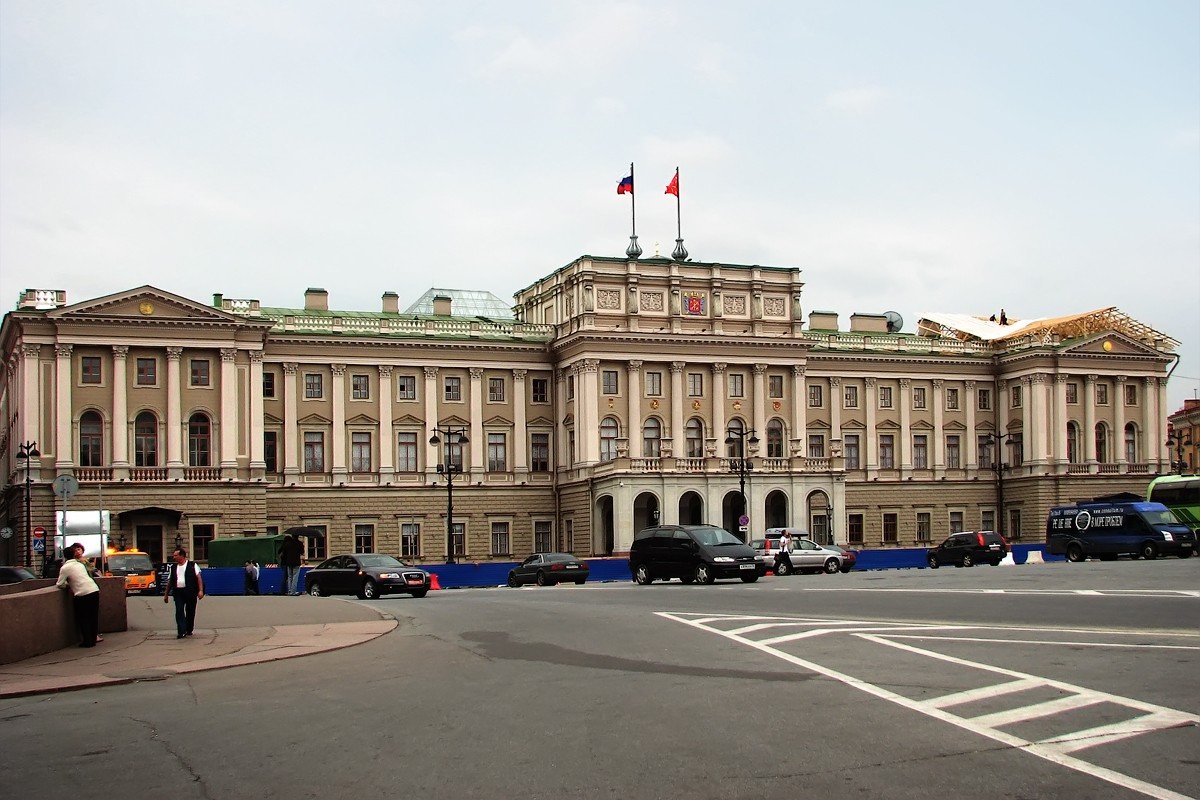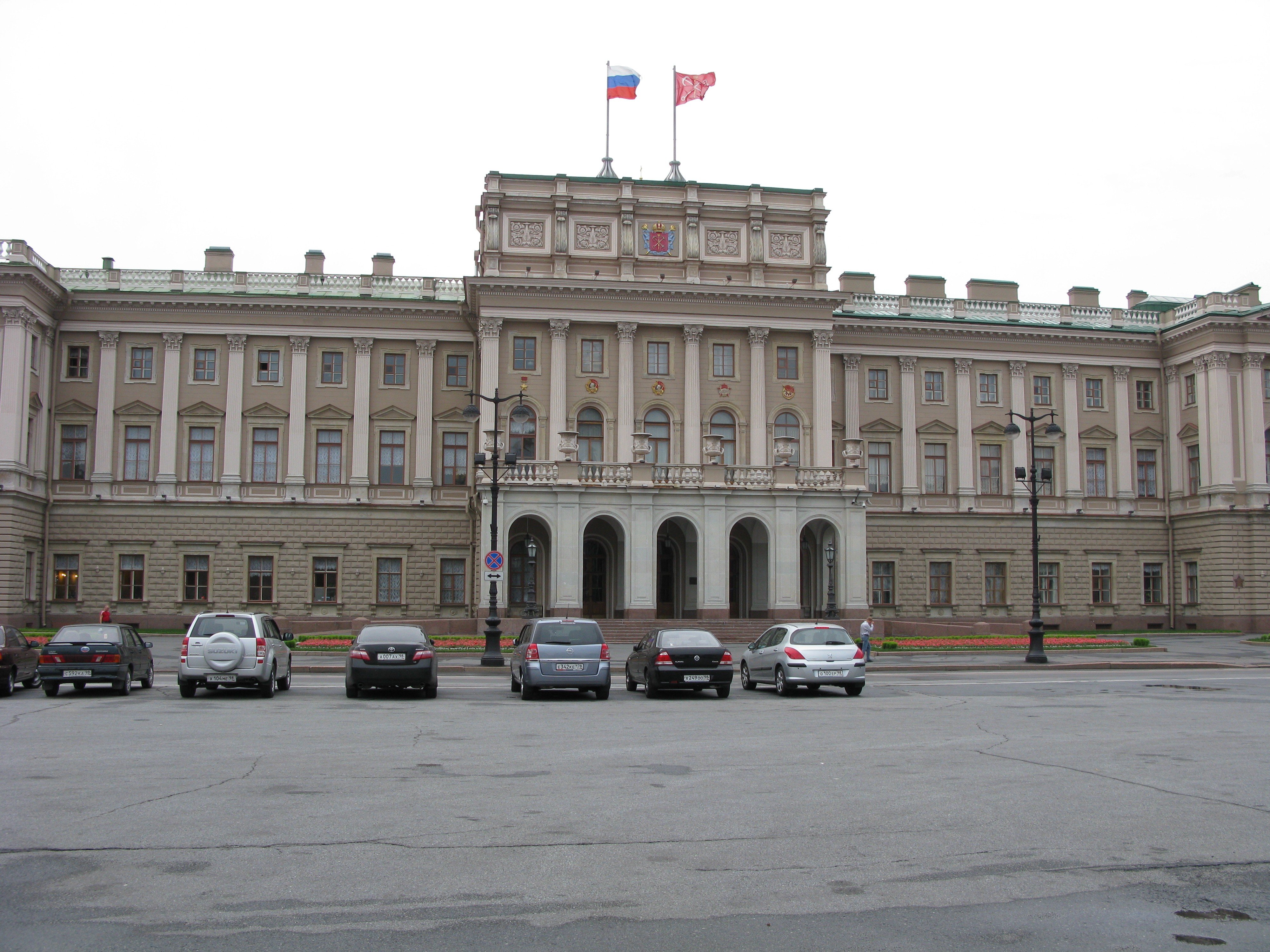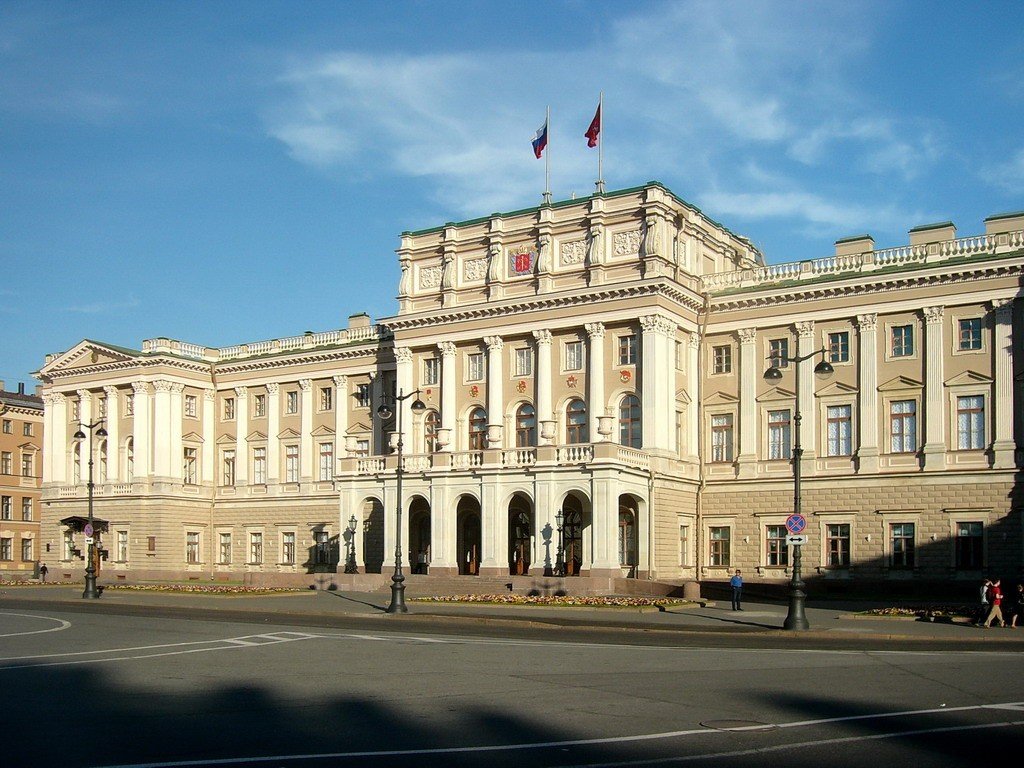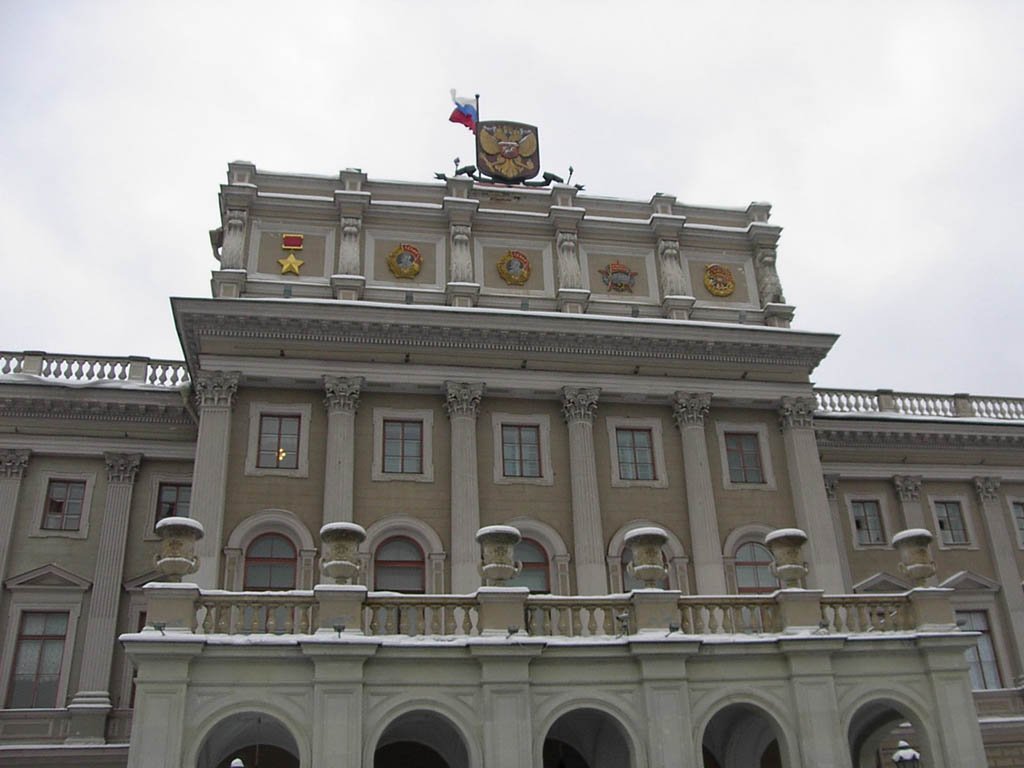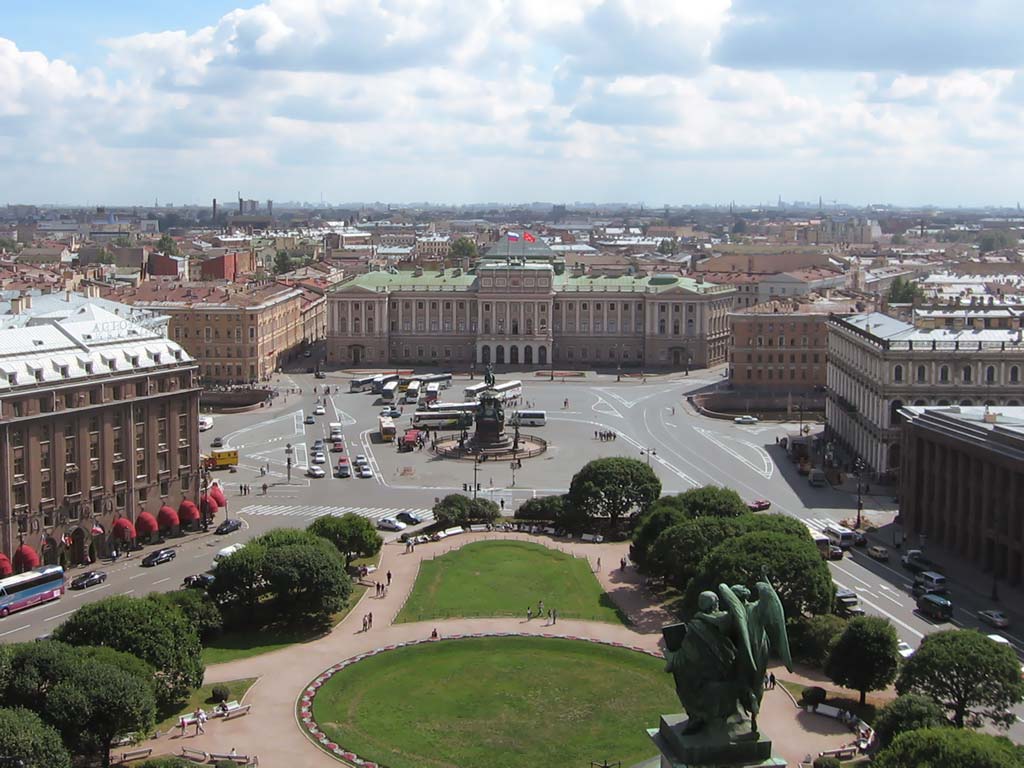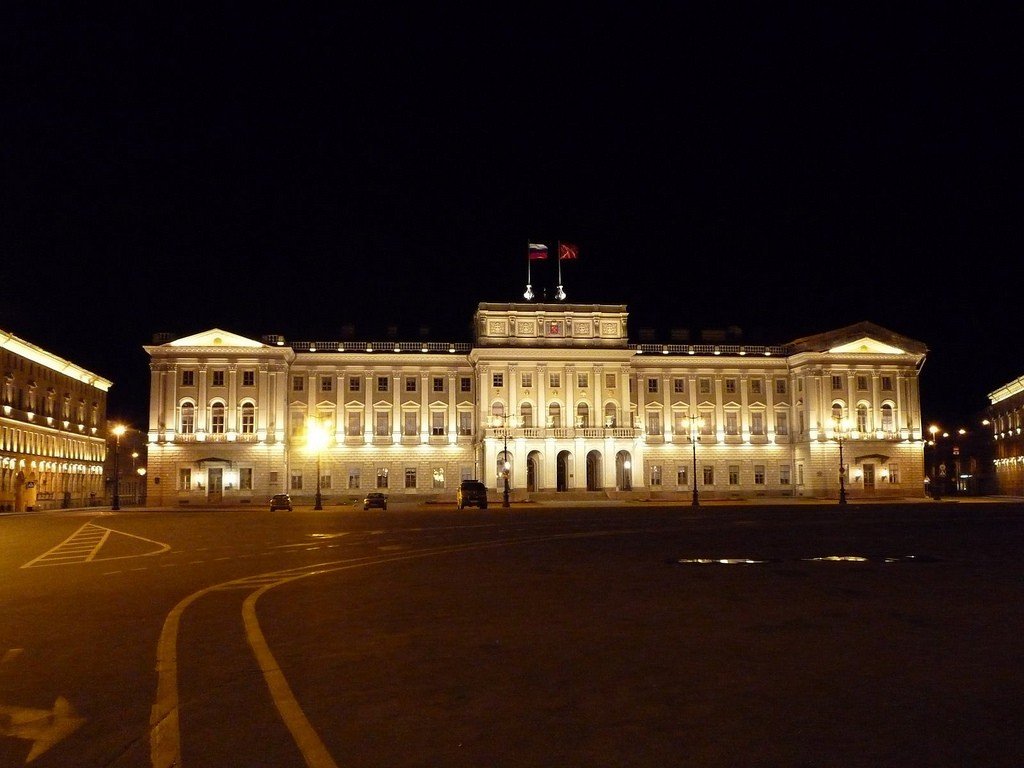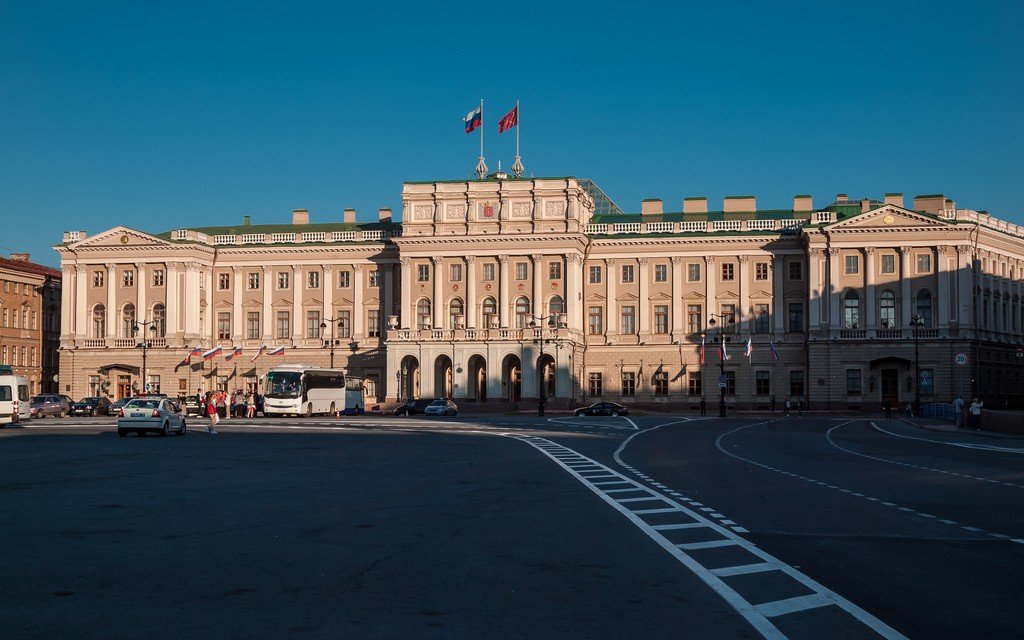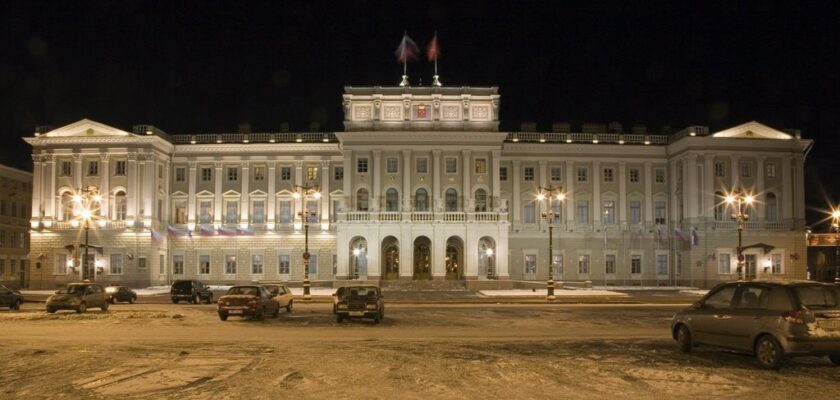Mariinsky Palace
The Mariinsky Palace (St. Isaac’s Square, 6) was a wedding gift from Emperor Nicholas I to his eldest daughter Maria for her marriage to Duke Maximilian of Leuchtenberg, son of Eugene Beauharnais (Napoleon’s stepson). The court architect Andrei Shtakenshneider, who built the palace, did his best for the Tsar’s daughter: there were luxurious ceremonial halls, spectacular apartments, a huge winter garden, and her own house church. A special innovation that amazed all contemporaries was the arrangement of a gentle ramp on cast-iron structures inside the building. There is a legend in the city that it was created because of the mistress’s leg disease – it was possible to roll a wheel chair on it. After the construction work was completed, Shtakenshneider was awarded the title of professor “for his special art and excellent knowledge of architecture.”
.After Maria Nikolaevna’s death, her heirs sold the palace to the treasury, and it was adapted for meetings of the State Council. In 1901 in the rotunda of this palace a solemn meeting was held to celebrate the centenary of the State Council, depicted in Repin’s famous huge painting, which can be seen in the Russian Museum.
.During the Great Patriotic War, the Mariinsky Palace housed the headquarters of the People’s Militia and a hospital. Now it houses the Legislative Assembly of St. Petersburg. The building is still decorated with images of orders and medals, which were awarded to Leningrad during the Soviet era.
